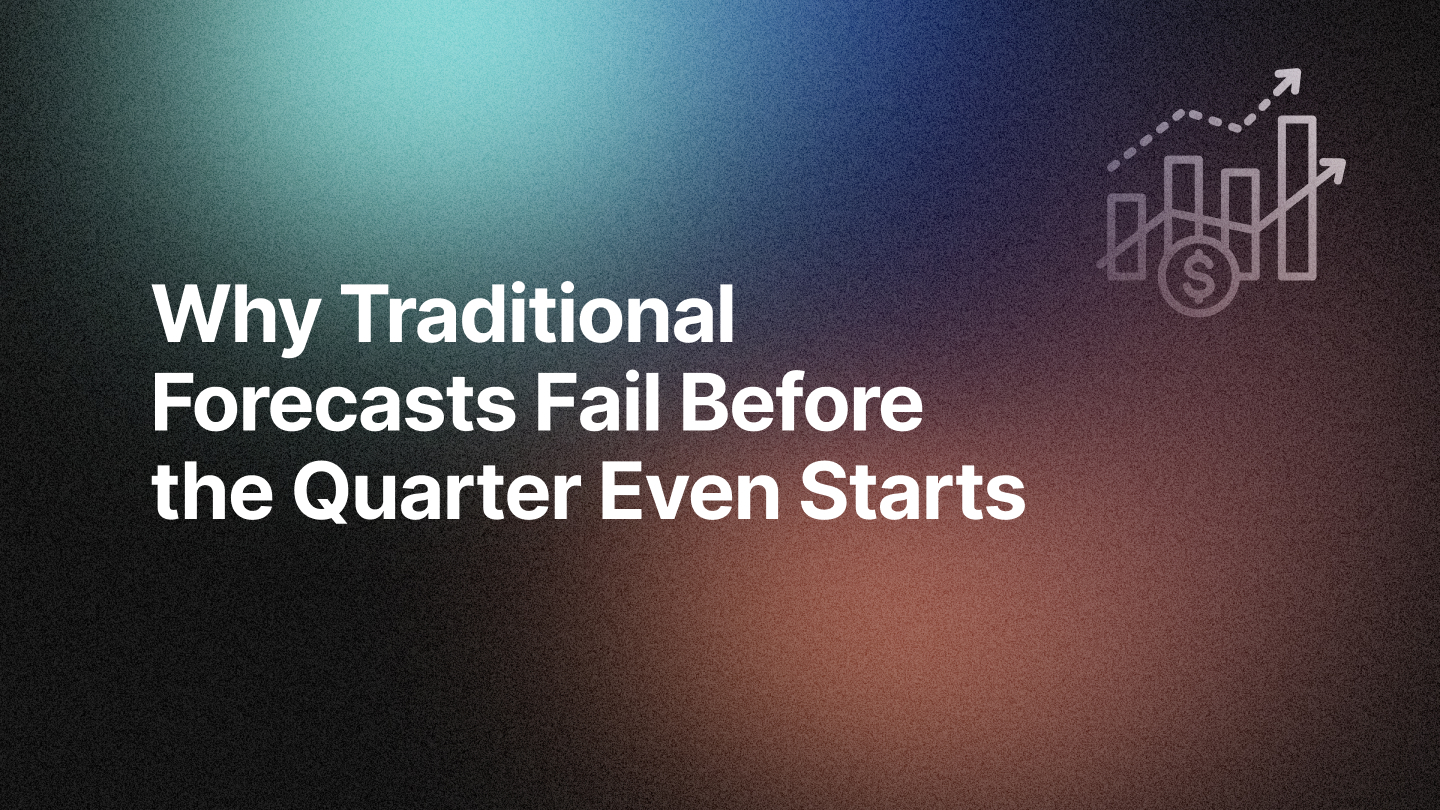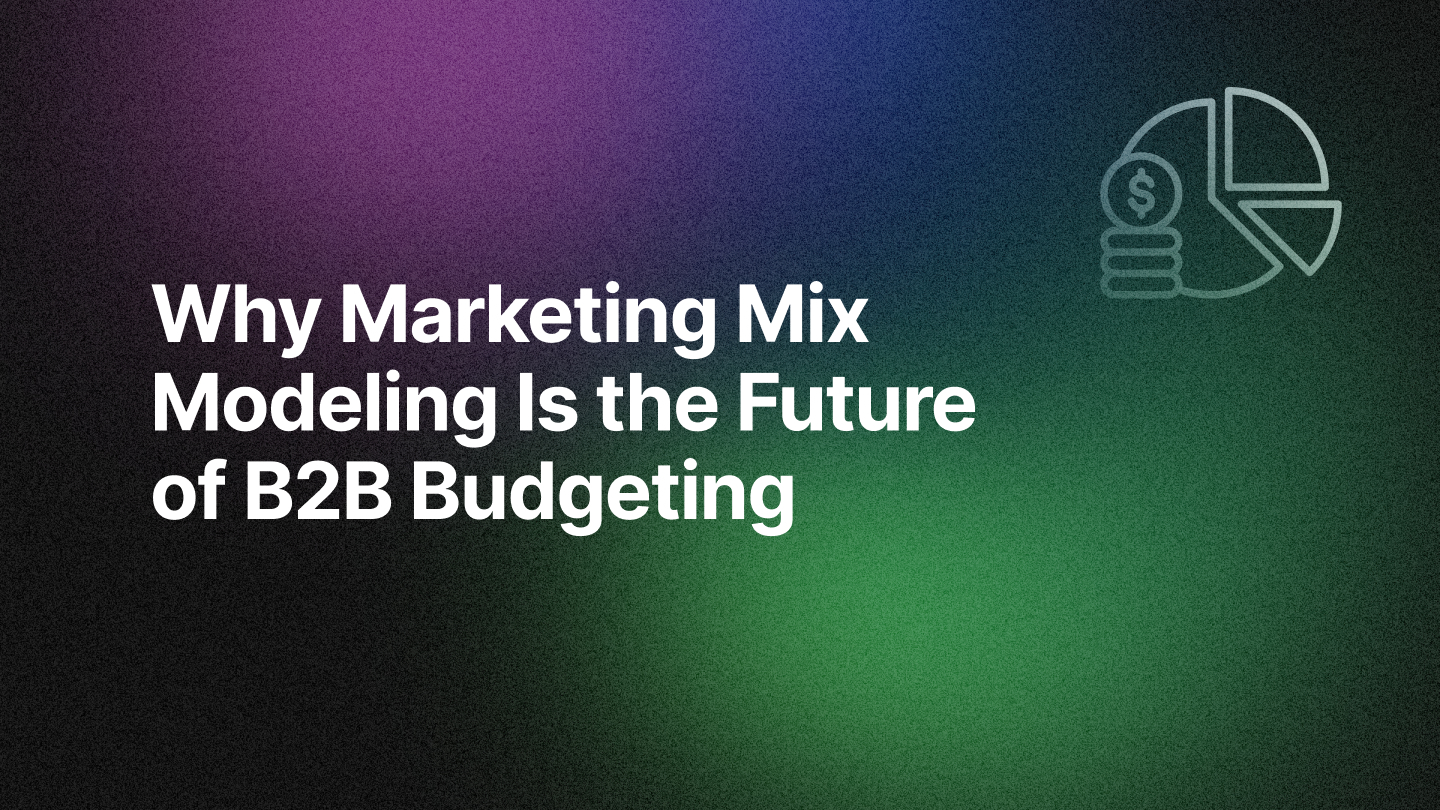The landscape of B2B marketing is rapidly evolving, and the role of the Chief Marketing Officer (CMO) has become increasingly complex and strategic. One of the primary challenges that CMOs face today is ensuring pipeline predictability, acceleration, and overall target attainment. Traditionally, marketing has been analyzed retrospectively, using attribution models to assess the success of past campaigns. This "rearview mirror" approach, while useful, often leads to internal disputes over credit allocation and lacks a proactive framework for driving future growth.
In recent years, there has been a notable shift toward a more forward-looking "windshield" approach in marketing. This new paradigm leverages predictive insights and data-driven decision-making to not only assess past performance but also to forecast future opportunities and optimize strategies for better ROI. In this blog, we explore the transition from traditional attribution models to modern, predictive approaches and the implications for CMOs.
The Rearview Mirror: Traditional Attribution Models
Historically, marketing attribution has focused on analyzing past data to understand the contribution of various channels to a customer's journey. Models such as last-click or first-click attribution have been commonly used to allocate credit among different touchpoints. This approach, akin to looking in the rearview mirror, provides valuable insights into which channels were most effective in converting leads. However, it also has several limitations:
- Narrow Focus: Traditional attribution models often concentrate on specific touchpoints, failing to capture the full complexity of the customer journey. According to HubSpot, these models may overlook the influence of earlier or intermediary interactions that contribute to the final conversion.
- Internal Conflicts: The emphasis on credit allocation can lead to "credit wars" between marketing and sales teams. Each department may vie for recognition, leading to tensions and a fragmented understanding of success. Forbes discusses how this focus on attribution can sometimes overshadow the collective goal of driving business growth.
- Reactive Adjustments: By analyzing past performance, traditional models do not provide real-time insights or forward-looking guidance. This reactive nature limits the ability to make proactive adjustments and optimize ongoing campaigns.
The Windshield: Predictive Insights and Data-Driven Decisions
The modern CMO's role has expanded from merely analyzing past data to anticipating future trends and outcomes. This "windshield" approach is characterized by the use of predictive insights and data-driven decision-making. Unlike traditional models, predictive analytics leverage historical data to forecast future customer behaviors, market trends, and potential risks. This shift enables CMOs to be more proactive in their strategies.
- Predictive Insights: Predictive AI allows marketers to forecast future trends and behaviors with a high degree of accuracy. This technology helps in identifying new opportunities, optimizing resource allocation, and mitigating risks. For example, understanding which leads are most likely to convert can help prioritize marketing efforts and improve conversion rates by up to 50%.
- Pipeline Predictability and Acceleration: One of the key benefits of predictive analytics is its ability to enhance pipeline predictability. By analyzing patterns in customer behavior, CMOs can identify potential bottlenecks and opportunities for accelerating leads through the funnel. According to McKinsey & Company, predictive marketing can significantly improve pipeline management, leading to more efficient sales processes and higher conversion rates by up to 30%.
- Data-Driven Alignment: Modern attribution models provide a comprehensive view of the customer journey, facilitating better alignment between marketing and sales teams. This unified perspective ensures that both teams work towards shared business objectives, such as increasing revenue and improving customer retention.
- Proactive Strategy Development: With real-time data and predictive insights, CMOs can develop proactive strategies that are responsive to market changes. This approach allows for the continuous optimization of marketing efforts, ensuring that campaigns are not only effective but also adaptable to shifting consumer preferences.
How RevSure’s Full-Funnel Attribution Provides a Windshield View

RevSure’s full-funnel attribution solution exemplifies this windshield approach, offering CMOs and marketing teams a forward-looking perspective that enhances their strategic planning and execution. Here’s how:
- Comprehensive Data Integration: RevSure integrates data from various touchpoints across the customer journey, providing a holistic view of marketing efforts. This integration enables CMOs to see beyond individual touchpoints and understand the cumulative impact of their campaigns.
- Predictive Analytics: By leveraging advanced predictive analytics, RevSure helps CMOs forecast future trends and customer behaviors. This capability allows marketing teams to anticipate market shifts, identify emerging opportunities, and stay ahead of the competition.
- Enhanced Pipeline Management: With detailed insights into the customer journey, RevSure enables CMOs to predict and manage pipeline progression more effectively. This foresight helps in identifying potential bottlenecks and opportunities for acceleration, leading to improved sales outcomes
- Alignment of Marketing and Sales: RevSure’s unified data approach fosters better alignment between marketing and sales teams. Providing a shared view of the customer journey ensures that both teams are working towards common goals and metrics, reducing internal conflicts and enhancing collaboration.
Learn more about RevSure’s Future of B2B attribution POV.
In today's complex B2B marketing landscape, the rearview mirror approach of traditional attribution models is no longer sufficient. While these models provide valuable insights into past performance, they often fail to offer the forward-looking perspective necessary for proactive decision-making. The windshield approach, characterized by predictive insights and data-driven strategies, enables CMOs to anticipate future trends, optimize resource allocation, and align marketing efforts with broader business goals.
As the role of the CMO continues to evolve, the focus must shift from simply analyzing what has happened to predicting what will happen and strategically planning for it. By leveraging predictive analytics and data-driven insights, CMOs can not only improve pipeline predictability and acceleration but also drive overall business growth. This forward-looking mindset ensures that marketing is not merely a support function but a key driver of success and profitability.
As Forrester suggests, the integration of predictive technologies into marketing strategies is essential for staying competitive in an increasingly data-driven world. In conclusion, the evolution from a rearview mirror to a windshield perspective is not just a trend but a necessity for modern B2B marketers. It empowers them to be proactive, data-savvy leaders who can navigate the complexities of today's market with confidence and foresight.
Related Blogs








